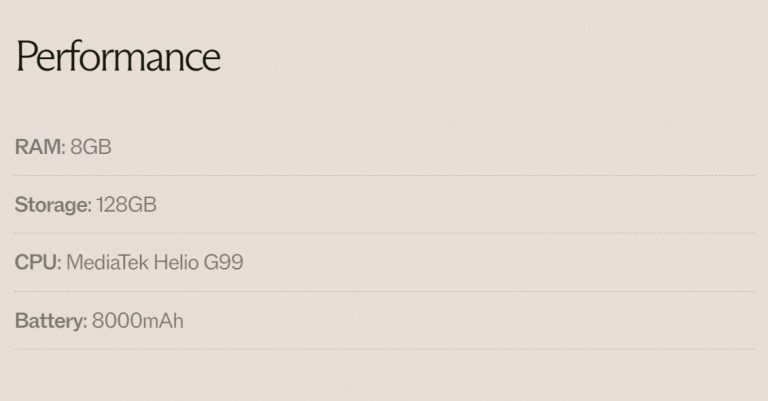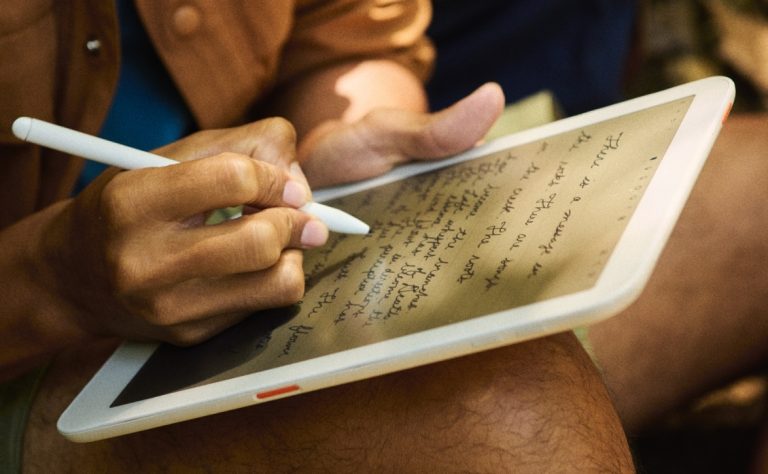One of the most intriguing product announcements of 2024 is Daylight Computer’s DC-1 tablet. When it was revealed in May, Daylight described DC-1 as “a new kind of computer designed for deep focus and wellbeing.” The company will achieve this by offering a 60fps paper-like display (which the company calls Live Paper) and eliminating blue light.
I am hoping to get my hands on a review unit in the coming weeks, but in the meantime, I spent some time speaking with Daylight Computer Co. CEO Anjan Katta about the launch of the tablet, what Live Paper really is, and how he uses the tablet on a daily basis.
DC-1’s successful launch
Since I spoke with Anjan Katta last week, the company has sold out of all five batches of DC-1 Founder’s Edition tablets set to ship this year. The first three batches sold out within the first 24 hours, and batch 4 sold out on May 29. Most of batch 5 was gone by the time I talked to Katta, so I asked about how the response compared to the company’s expectations.
we’re all sold out for 2024!!
(still trying our best to get more 🤞)thank you for all the positive vibes — we’re just getting started 🙂
— daylight (@daylightco) July 8, 2024
“I think I was hoping, given how high the price is, I was hoping we’d sell 1,000 or 2,000 units,” Katta told me. “So the fact that we’re almost entirely sold out is pretty cool, because something that’s really expensive, it takes time, people need word of mouth, you need credibility, you need reviews, you need to hear about it over again, you need to see famous people using it. To have such a large number of people [spending their money on this], I think speaks to how badly the world wants this, how badly the world wants a different take on computing.”
Tech. Entertainment. Science. Your inbox.
Sign up for the most interesting tech & entertainment news out there.
By signing up, I agree to the Terms of Use and have reviewed the Privacy Notice.
Price-performance ratio
At $729, Daylight’s DC-1 is more expensive than virtually every other E Ink tablet on the market. Amazon sells the basic Kindle for $99, Kobo charges $149 for one of the first color e-readers in existence, and even most of Boox’s premium tablets clock in at under $500.
With that in mind, why is Daylight asking over $700 for a moderately-powered Android tablet?
“We make almost no money on it,” Katta said. “We were originally doing preorders at $1,200, so we wanted to try to get it at that price. It’s kind of [like] Tesla’s Roadster. If you want to introduce new technology as a society, and you don’t have the hundreds of millions of dollars, if not billions of dollars—budgets of Apple or Samsung—the bezels are going to be bigger, the thing is going to be thicker, the price is going to be higher. And those are intrinsic qualities, they’re just all about the scale, just about not having any leverage with suppliers. No one wants to work with a new small company, especially in consumer electronics. It’s all set up for scale.”
 DC-1 specifications. Image source: Daylight Computer
DC-1 specifications. Image source: Daylight Computer
Profits aside, I was curious about the challenges of marketing a $729 device. After all, a brand new Galaxy Tab S9 retails for $799 and is currently on sale for $649. With its Qualcomm Snapdragon 8 Gen 2, the Tab S9 is going to be substantially more powerful than the Daylight Computer 1. But as Katta told me, his “healthy computer” is no slouch:
“I mean, you can play Asphalt on our [tablet],” he said, presumably referring to the Android game Asphalt 9: Legends. “That’s the way we tested it. It’s powerful enough to do all the jobs you need to do, and in particular, we wanted to do iPad-level performance, even with a far less powerful chip. But it needed to be good enough that our software could do it, so the PDF performance on our thing, built around PDF renderer, is as good, if not better, than PDF Expert on an iPad. So, it kind of speaks to when you dedicate and focus—you can’t do what Apple does or Samsung and do everything—but if you pick a couple areas, you can do a really good job.”
What is Daylight Computer’s Live Paper?
 Writing on the Live Paper display of the DC-1. Image source: Daylight Computer
Writing on the Live Paper display of the DC-1. Image source: Daylight Computer
First, DC-1’s “paper-like display” is not made by E Ink. E Ink is a company that makes displays for popular e-readers like Kindle, Kobo, Boox, and PocketBook, as well as reMarkable. The DC-1 uses a reflective LCD display, and I’ll let Katta explain why he chose this technology:
I started trying to find ways to make E Ink go fast, starting June 2018 and so it’s a long journey, and I came up with the idea of live paper in early 2019. I had my little first scientific prototype in late 2020, I had my first proof-of-concept working prototype in late 2021, and then it took from then until now to get it into production.
There is a class of displays called electrophoretic displays that have been around since the ’70s, and they were kind of never really good enough, even though they existed, and then a company called E Ink came along and solved enough of the problems of electrophoretic displays and decided to brand it E Ink. But the actual category that electrophoretic displays fall under is called ePaper.
So, I believe we’ve done something similar, where there’s a category of displays called transflective or memory or reflective LCDs that have been around for a long time. They’ve never been quite good enough, they’re not paper-like, their viewing angle is not great, their reflectance is slow, and a ton of problems like that. So I put together a bunch of research—we have three patents—most of it is from a couple of Japanese professors’ research, and basically what we did is we applied some internal science innovations across the entire stack to finally make what we think is good enough reflective LCD, which is a form of ePaper, so in 70% of circumstances it should look pretty similar to E Ink.
They both reflect light, they both look paper-like, and so that’s what we did, is we think we finally made it viable enough, and that’s why we’re calling it Live Paper. Yeah, some people are like, ah, they just got this display off the shelf, and we’re like, not quite! If that was the case, somebody else would do it.
That should answer some of the questions prospective buyers had about Live Paper.
Who is the Daylight Computer for?
Earlier in our conversation, Katta mentioned that one of the product’s biggest potential markets is actually parents. You can’t run popular educational apps like Khan Academy on a Kindle or a Kobo, so most parents end up giving their kids iPads or Chromebooks. Those devices also give kids access to a virtually limitless collection of distractions.
I asked if parents were top of mind when Daylight Computer was developing the tablet or if that was more of a happy accident after the announcement.
“It was totally in consideration, but I guess the way we think about it is I just tried to make a computer for myself,” Katta explained. “I have seasonal affective disorder. I spend all day on screens. My eyes would hurt. I’d lose my mental health. I’d just be so distracted. I’d be addicted. I’m like, ‘What the heck? I’m the worst version of myself.’
“This computing thing is God-like magic. Why can’t they have God-like magic without crack dealers right beside it? So, I was like, I don’t need too much of a computer—something that could read, something that could write, something that could think. Prioritizing mental and physical health is so important, and so I think because that was the crux of what we were doing, it turns out other people also have mental and physical difficulties with computers, whether that’s parents or hedge fund managers or folks who have concussions.”
So, what do you do with it?
 Sol:OS running on DC-1. Image source: Daylight Computer
Sol:OS running on DC-1. Image source: Daylight Computer
Finally, I asked the CEO how the Daylight Computer fits into his life, and he told me that he uses it in three main ways on a day-to-day basis:
- Morning and nighttime computer: “I kind of stay away from my devices in the morning and just try to use this. If I want to listen to some music in the morning, I can play Spotify off of it. If I need to listen to a podcast, I can do that. If I need to quickly write a to-do into Todoist, I’m able to do it. But I’m away from Slack. I’m away from the million things. And same thing at nighttime. I find myself a lot calmer, a lot less stressed. I’m able to kind of wind down with it.”
- Anti-procrastination computer: “Let’s say there’s something I need to read, a patent to review. I will load it onto the [DC-1], and then I’ll go sit down with it and leave my phone behind. And then there’s really nothing to do except whatever you’ve loaded onto it.”
- reMarkable / Kindle on steroids: “It’s like a better reMarkable for me. Or I use the Kindle app on it. Or the Google Play Books app.”
The first-generation Daylight Computer is currently sold out through 2024, but you can put down a $100 deposit if you want to secure a unit for early 2025.

